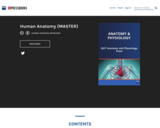
This is a lab manual fo ra human anatomy course.
- Subject:
- Anatomy/Physiology
- Life Science
- Material Type:
- Textbook
- Provider:
- QUT eBooks
- Author:
- Fallon Horstmann
- Katherine Harkin
- Paul Fenn
- Physiology Team
- QUT Anatomy
- Date Added:
- 05/09/2021

This is a lab manual fo ra human anatomy course.

Human anatomy is one of the foundational disciplines in the training of health care professionals. Knowledge of human structure at both the macroscopic and microscopic levels serves as a framework for the study of normal function and dysfunction. This workbook presents a series of questions related to a particular area of anatomy. Answers to those questions are included at the end of the book. This approach to self-assessment in basic human anatomy will be helpful to students in preparing for clinical-based learning activities as well as for other types of knowledge assessment and evaluation.
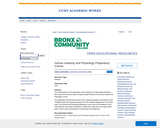
The overall purpose of this preparatory course textbook is to help students familiarize with some terms and some basic concepts they will find later in the Human Anatomy and Physiology I course.
The organization and functioning of the human organism generally is discussed in terms of different levels of increasing complexity, from the smallest building blocks to the entire body. This Anatomy and Physiology preparatory course covers the foundations on the chemical level, and a basic introduction to cellular level, organ level, and organ system levels. There is also an introduction to homeostasis at the beginning.
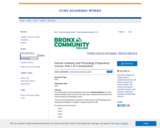
The overall purpose of these preparatory course set of learning objectives is to help students familiarize with some terms and some basic concepts they will find later in the Human Anatomy and Physiology I course.
These 40+ learning objectives to prepare for Human Anatomy and Physiology can be downloaded and played in a desktop, or laptop (windows exe file).
The entire course has four parts: Part 1 Part 2 Part 3 Part 4
Each learning objective is followed by a set of multiple choice question similar to those found later in a Human Anatomy and Physiology course.
The organization and functioning of the human organism generally is discussed in terms of different levels of increasing complexity, from the smallest building blocks to the entire body. This Anatomy and Physiology preparatory course covers the foundations on the chemical level, and a basic introduction to cellular level, organ level, and organ system levels. There is also an introduction to homeostasis at the beginning.
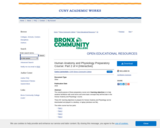
The overall purpose of these preparatory course set of learning objectives is to help students familiarize with some terms and some basic concepts they will find later in the Human Anatomy and Physiology I course.
These 40+ learning objectives to prepare for Human Anatomy and Physiology can be downloaded and played in a desktop, or laptop (windows exe file).
The entire course has four parts: Part 1 Part 2 Part 3 Part 4
Each learning objective is followed by a set of multiple choice question similar to those found later in a Human Anatomy and Physiology course.
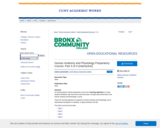
he overall purpose of these preparatory course set of learning objectives is to help students familiarize with some terms and some basic concepts they will find later in the Human Anatomy and Physiology I course.
These 40+ learning objectives to prepare for Human Anatomy and Physiology can be downloaded and played in a desktop, or laptop (windows exe file).
The entire course has four parts: Part 1 Part 2 Part 3 Part 4
Each learning objective is followed by a set of multiple choice question similar to those found later in a Human Anatomy and Physiology course.
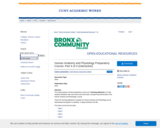
The overall purpose of these preparatory course set of learning objectives is to help students familiarize with some terms and some basic concepts they will find later in the Human Anatomy and Physiology I course.
These 40+ learning objectives to prepare for Human Anatomy and Physiology can be downloaded and played in a desktop, or laptop (windows exe file).
The entire course has four parts: Part 1 Part 2 Part 3 Part 4
Each learning objective is followed by a set of multiple choice question similar to those found later in a Human Anatomy and Physiology course.

An Exploration of Structure and Function
Word Count: 262780
(Note: This resource's metadata has been created automatically by reformatting and/or combining the information that the author initially provided as part of a bulk import process.)

This course is a basic study of the structure and functioning of the human body. Emphasis will be placed on the interrelationships among the systems. This course introduces the major chemical and biological principles through the study of the human body. Note: This course may be taken alone as a 3 credit biology course OR in conjunction with BIO102 Human Biology Laboratory as a 4 credit biology course.
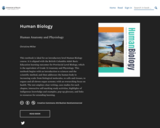
This textbook is ideal for an introductory level Human Biology course. It is aligned with the British Columbia Adult Basic Education learning outcomes for Provincial Level Biology, which is the equivalent of Grade 12 Anatomy and Physiology. This textbook begins with an introduction to sciences and the scientific method, and then addresses the human body in increasing scale: from biological molecules, to cells and tissues, to organs and all eleven organ systems; with an overarching focus on health. The text employs clear writing, case studies for each chapter, interactive self-marking study activities, highlights of Indigenous knowledge and examples, pop-up glossary, and links to resources for extending learning.
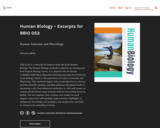
Human Anatomy and Physiology
Short Description:
This book is a selection of chapters from the book Human Biology. The Human Biology textbook is ideal for an introductory level Human Biology course. It is aligned with the British Columbia Adult Basic Education learning outcomes for Provincial Level Biology, which is the equivalent of Grade 12 Anatomy and Physiology. This textbook begins with an introduction to sciences and the scientific method, and then addresses the human body in increasing scale: from biological molecules, to cells and tissues, to organs and all eleven organ systems; with an overarching focus on health. The text employs clear writing, case studies for each chapter, interactive self-marking study activities, highlights of Indigenous knowledge and examples, pop-up glossary, and links to resources for extending learning.
Long Description:
This textbook is ideal for an introductory level Human Biology course. It is aligned with the British Columbia Adult Basic Education learning outcomes for Provincial Level Biology, which is the equivalent of Grade 12 Anatomy and Physiology. This textbook begins with an introduction to sciences and the scientific method, and then addresses the human body in increasing scale: from biological molecules, to cells and tissues, to organs and all eleven organ systems; with an overarching focus on health. Each chapter begins and ends with a case study related to the chapter topic. The text employs clear writing, case studies for each chapter, interactive self-marking study activities, highlights of Indigenous knowledge and examples, pop-up glossary, and links to resources for extending learning. Images are meant to be inclusive and were chosen with equity/diversity/inclusion in mind.
Word Count: 152086
Included H5P activities: 90
(Note: This resource's metadata has been created automatically by reformatting and/or combining the information that the author initially provided as part of a bulk import process.)
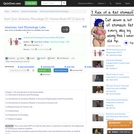
Chapter 1: An Introduction to the Human Body
1.1 Overview of Anatomy and Physiology .
1.2 Introduction to Anatomy Module 3: Structural Organization of the Human Body
1.3 Introduction to Anatomy Module 4: Functions of Human Life
1.4 Requirements for Human Life .
1.5 Homeostasis .
1.6 Anatomical Terminology .
1.7 Medical Imaging .
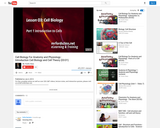
The first video in our Cell Biology Lecture, part of our Anatomy and Physiology lecture series.
This video introduces us to both cell biology and cell theory. To see the rest of our series please be sure to check out http://www.mrfordsclass.net
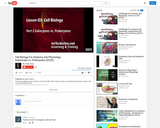
Our second video from the cell biology lesson, part of our anatomy and physiology lecture series.
This video gives a brief summary of the differences between eukaryotes and prokaryotes.
All of our videos can be found at http://www.mrfordsclass.net
The concepts covered in this video include:
•Eukaryotes
•Prokaryotes
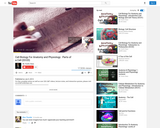
Our third video from the cell biology lesson, part of our anatomy and physiology lecture series. This video introduces us to the study of the cell and the cell's components.
Some video footage was taken at the Texas Renaissance Festival: http://texrenfest.com/
Some music provided by Free Early Renaissance Music: http://www.jsayles.com/familypages/earlymusic.htm
All of our videos can be found at http://www.mrfordsclass.net

In this lesson, students will research how famous families came to be. They’ll work with their peers to uncover details about fertilization, gestation, and birth, as well as other aspects of the famous family’s story. Students will then demonstrate (orally or written) their understanding of the concepts from the past two lessons. They will also reflect on the role celebrities play in shaping our thoughts, feelings and behaviors around reproduction and families.

This first lesson (of three) explains sexual and reproductive anatomy, and human reproduction via penis-in-vagina sexual intercourse (PIV sex). During this lesson, the educator will model the use of respectful, inclusive concepts and language to describe the process of human reproduction and family formation.

This second lesson enables students to apply what they know about human reproduction via PIV sex (Lesson 1 of this series) to other means of reproduction. They will not only learn the steps in how insemination and IVF work to create a pregnancy, but they will also learn that people other than parents can provide the genetic material (eggs, sperm, and embryos) and give birth to a child for someone else (surrogates). Students will be working in small groups to help one another understand the concepts and to practice using the inclusive language that the educator modeled in the first lesson.

This course is designed to give the student a clear understanding of the pathophysiology of the menstrual cycle, fertilization, implantation, ovum growth development, differentiation and associated abnormalities. Disorders of fetal development including the principles of teratology and the mechanism of normal and abnormal parturition will be covered as well as the pathophysiology of the breast and disorders of lactation. Fetal asphyxia and its consequences will be reviewed with emphasis on the technology currently available for its detection. In addition the conclusion of the reproductive cycle, menopause, and the use of hormonal replacement will be covered.
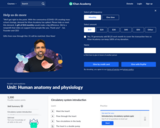
Introduction to the major organ systems of the human body, general anatomy, and how the different organs work together. Includes videos, articles, flashcards, and quizzes.